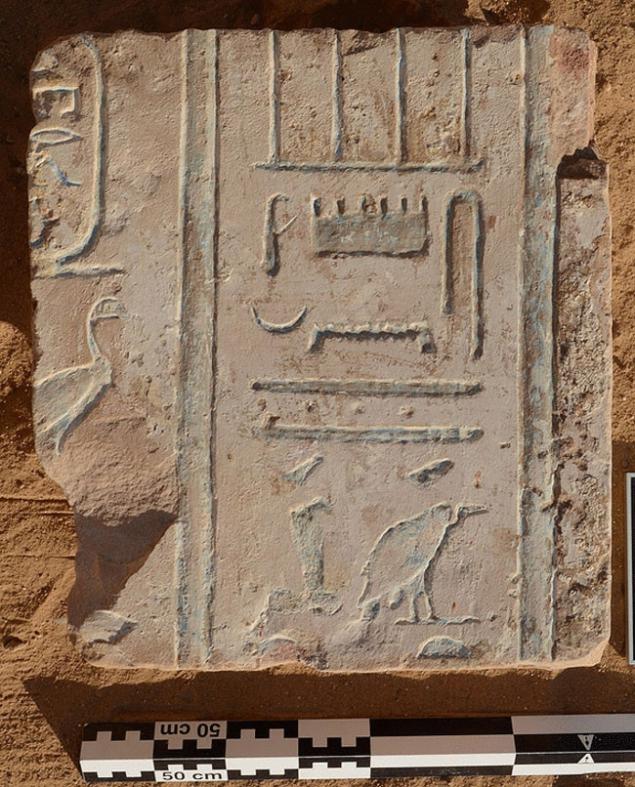411
The mystery of the disappearance of the Persian army in the Egyptian desert
An archaeologist from Leiden University, said that he was able to explain the disappearance of fifty thousand Persian army in the Egyptian desert.
Professor Olaf Kaper (Olaf Kaper), an archaeologist from Leiden University (the Netherlands), believes that he may have been able to solve one of the biggest mysteries of the history of the Ancient East – that happened with a 50-strong army of the Persian king cambise II in the Egyptian desert around 524 BC

According to the Greek historian Herodotus, Kambiz II, the eldest son of Cyrus the Great, sent his army to destroy the Oracle of Amun in Siwa oasis. Fifty thousand Persian soldiers joined in the Western desert Egypt near Luxor. Somewhere in the middle of the way the army overtook and destroyed the sandstorm.
"To this area, they say, reached the Persian army, and what happened to him then, no one knows, except, perhaps, themselves ammonia and those who heard their stories. To Ammon, in any case, they never came and never came back. Themselves the ammonium tell this. From Oasis the Persians went through the sandy desert. Approximately halfway between the Oasis and Ammon just in time for Breakfast was a terrible [sandy] storm from the South and the army buried under mounds of sand. So perished the Persians," wrote Herodotus.
Although many scholars believe that this story is a legend, fans and experts were looking for the remains of the Persian soldiers for many decades. Professor Olaf Kaper never believed in this story. "Some people were expecting to find an army, fully armed. However, experience has long shown that to die from a sand storm and can not" – said the archaeologist.
According to the Professor, army cambise II disappeared without a trace in the sand, and was defeated by the leader of the Egyptian rebels Petubastis III. The final destination of the March of the Persians was the oasis of Dakhla, said the researcher. According to him, it was the citadel Petubastis III, the center of concentration of his troops. After defeating the Persian army, the leader of the rebels managed to win most of Egypt and proclaim himself Pharaoh.
The fact that the fate of the army cambise II, for so long remained unclear, an archaeologist explains the actions of Darius I, who two years after the defeat of his predecessor, suppressed an Egyptian revolt.
"Darius I attributed the shameful defeat of his predecessor to natural phenomenon. Thanks to this effective manipulation, 75 years after all these events, Herodotus could really take note of the story of the sandstorm" – think Olaf Kaper.
Over the last ten years, the Professor has participated in excavations in Amheida, in the oasis of Dakhla. This year he has fully deciphered the titles Petubastis III. "That's when the puzzle pieces fell into place," – said the archaeologist.
Sorry, details of exactly how the titles were used to reconstruct events, as well as detailed argumentation theory, in a press release from Leiden University are given.
Meanwhile, in 2009, the Italian archaeologists Angelo and Alfredo Castiglioni announced that found in the Sahara desert, the remains of the army cambise II. In the oasis of Bahrin they found ceramics, human remains, fragments of bronze weapons, arrowheads and other items that dated to the Achaemenid period (Persian dynasty, which occurred Cambis II).
According to the researchers, after studying old maps, they suggested that archaeologists trying to find the vanished army, just looking for is not there. According to the Castiglioni brothers, the Persian army did not go on the caravan trail between the oases of Dakhla and Farafra, and the other route: to the West towards the plateau of the GILF El Kebir, passing through the dry channel of Abd-El-Melik, they turned to the North, in the direction of Siwa. This path allowed the Persians to come to the oasis unexpectedly, and in addition allow them to sidestep all the oases, which was controlled by the Egyptians.
Cambis II was a Persian king in 530-522 BC, but In 525 he defeated the Egyptian army and was taken prisoner by Pharaoh Psammetichus III. Capturing Egypt, he founded the XXVII dynasty. In 524 BC, the king invaded the country of Kush, but was unsuccessful and returned to Egypt.
In the year 522, Kambiz II received the news of revolt Gaumata in Babylon. On the way to Persia, the king dies under strange circumstances. "When king jumped on his horse, dropped the tip of the sheath of his sword, naked sword cut his thigh," – says Herodotus. After a few days the king died. Ctesias tells of the death kambisa a little differently: "For fun, Struga knife branch, badly damaged hamstring and died on the eleventh day."
According to the materials of the Leiden University
Source: nkj.ru
Professor Olaf Kaper (Olaf Kaper), an archaeologist from Leiden University (the Netherlands), believes that he may have been able to solve one of the biggest mysteries of the history of the Ancient East – that happened with a 50-strong army of the Persian king cambise II in the Egyptian desert around 524 BC

According to the Greek historian Herodotus, Kambiz II, the eldest son of Cyrus the Great, sent his army to destroy the Oracle of Amun in Siwa oasis. Fifty thousand Persian soldiers joined in the Western desert Egypt near Luxor. Somewhere in the middle of the way the army overtook and destroyed the sandstorm.
"To this area, they say, reached the Persian army, and what happened to him then, no one knows, except, perhaps, themselves ammonia and those who heard their stories. To Ammon, in any case, they never came and never came back. Themselves the ammonium tell this. From Oasis the Persians went through the sandy desert. Approximately halfway between the Oasis and Ammon just in time for Breakfast was a terrible [sandy] storm from the South and the army buried under mounds of sand. So perished the Persians," wrote Herodotus.
Although many scholars believe that this story is a legend, fans and experts were looking for the remains of the Persian soldiers for many decades. Professor Olaf Kaper never believed in this story. "Some people were expecting to find an army, fully armed. However, experience has long shown that to die from a sand storm and can not" – said the archaeologist.
According to the Professor, army cambise II disappeared without a trace in the sand, and was defeated by the leader of the Egyptian rebels Petubastis III. The final destination of the March of the Persians was the oasis of Dakhla, said the researcher. According to him, it was the citadel Petubastis III, the center of concentration of his troops. After defeating the Persian army, the leader of the rebels managed to win most of Egypt and proclaim himself Pharaoh.
The fact that the fate of the army cambise II, for so long remained unclear, an archaeologist explains the actions of Darius I, who two years after the defeat of his predecessor, suppressed an Egyptian revolt.
"Darius I attributed the shameful defeat of his predecessor to natural phenomenon. Thanks to this effective manipulation, 75 years after all these events, Herodotus could really take note of the story of the sandstorm" – think Olaf Kaper.
Over the last ten years, the Professor has participated in excavations in Amheida, in the oasis of Dakhla. This year he has fully deciphered the titles Petubastis III. "That's when the puzzle pieces fell into place," – said the archaeologist.
Sorry, details of exactly how the titles were used to reconstruct events, as well as detailed argumentation theory, in a press release from Leiden University are given.
Meanwhile, in 2009, the Italian archaeologists Angelo and Alfredo Castiglioni announced that found in the Sahara desert, the remains of the army cambise II. In the oasis of Bahrin they found ceramics, human remains, fragments of bronze weapons, arrowheads and other items that dated to the Achaemenid period (Persian dynasty, which occurred Cambis II).
According to the researchers, after studying old maps, they suggested that archaeologists trying to find the vanished army, just looking for is not there. According to the Castiglioni brothers, the Persian army did not go on the caravan trail between the oases of Dakhla and Farafra, and the other route: to the West towards the plateau of the GILF El Kebir, passing through the dry channel of Abd-El-Melik, they turned to the North, in the direction of Siwa. This path allowed the Persians to come to the oasis unexpectedly, and in addition allow them to sidestep all the oases, which was controlled by the Egyptians.
Cambis II was a Persian king in 530-522 BC, but In 525 he defeated the Egyptian army and was taken prisoner by Pharaoh Psammetichus III. Capturing Egypt, he founded the XXVII dynasty. In 524 BC, the king invaded the country of Kush, but was unsuccessful and returned to Egypt.
In the year 522, Kambiz II received the news of revolt Gaumata in Babylon. On the way to Persia, the king dies under strange circumstances. "When king jumped on his horse, dropped the tip of the sheath of his sword, naked sword cut his thigh," – says Herodotus. After a few days the king died. Ctesias tells of the death kambisa a little differently: "For fun, Struga knife branch, badly damaged hamstring and died on the eleventh day."
According to the materials of the Leiden University
Source: nkj.ru
The hot sauce in the world—a facial paralysis for 30 minutes
California scientists have created an organic battery water based























